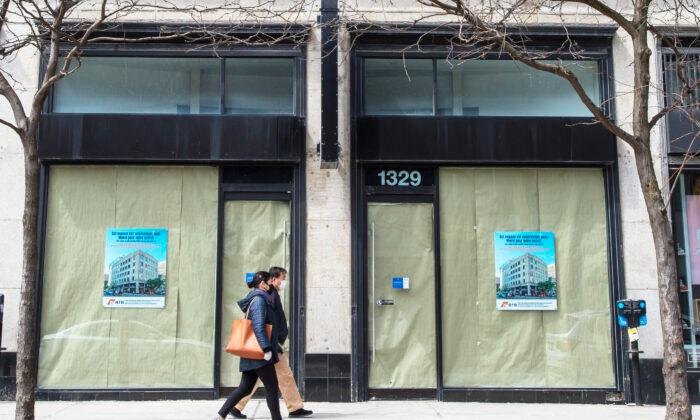The pandemic has highlighted the challenges that developed countries face around the world. Not only that, it has also exposed Canada’s huge income inequality gap between public- and private-sector workers, where the impact is only going to increase in significance as people get older.
Countries are facing perilous financial times, with economies collapsing and government borrowing skyrocketing. This means the structures that we finance must be re-engineered to make them more sustainable in the long term.
In Canada, 1,000 people turn 65 every day, according to the Canadian Association of Retired Persons. Borrowing some statistics from the U.S. Department of Health and Human Services, we can expect that those turning age 65 today have almost a 70 percent chance of needing long-term care support in their remaining years.
The cost of that is not trivial. For Canadians aged 65 to 69, per-person health-care spending by the provinces and territories in 2016 was over $6,400 on average, and that figure rose to over $20,000 for people aged 80 and older, according to the Canadian Institute for Health Information. In its recent report on health expenditure trends, CIHI also says total health expenditure in 2019 is expected to reach $265.5 billion, or $7,064 per person, representing 11.5 percent of Canada’s gross domestic product that year.
Canadians need to have enough resources to cover their own health-care and other needs as they get older, beyond the benefits that the government provides. For many of Canada’s seniors, most of their income will be provided by government programs like the Canada Pension Plan and Old Age Security along with their own savings including money in their RRSPs. Apart from these sources of income, the difference-maker in our futures is going to be pension plans, which the majority of Canadians don’t have.
Gold-plated pensions—usually available to public-sector employees—are the kinds that fall under defined benefit plans, which guarantee the pensioner a preset income for the rest of his or her life. It won’t change regardless of what happens in stock markets. Most Canadians, however, rely on their own savings and investments, such as those in RRSPs, which are dependent on what happens in stock markets.
According to Statistics Canada, of the 28 million people who filed taxes for the 2018 tax year, only 6 million contributed to an RRSP or a Pooled Registered Pension Plan that year. It’s not clear how many of those 6 million also belong to a public- or private-sector pension plan. In 2018, active membership in registered pension plans (RPPs) in Canada surpassed 6.4 million. Of the over 3.74 million public-sector workers that year, nearly 3.4 million belonged to a public-sector RPP, among whom over 3 million were in a defined benefit plan.
Based on 2019 Statistics Canada figures, assets held in public-sector pension plans totalled about $1.345 trillion, close to the total value of assets held in individual RRSPs (over $1.335 trillion). That makes it evident how big the gap is between government workers and the rest of Canadians, considering that government workers represent just a small fraction of all workers in Canada. Furthermore, the Canada Pension Plan had net assets of only $475.7 billion by the end of 2020, or about one-third of the value of assets held in those pension plans for government employees in 2019.
On top of that, annual contributions to pension plans for government employees have increased dramatically over the years. In 2009, public-sector pension contributions amounted to around $29.7 billion, and by 2019 it was over $45 billion. That amount was bigger than what flowed into most of the provinces on an annual basis. Only Ontario ($153.7 billion), Quebec (over $113.5 billion), and Alberta ($49.6 billion) saw more revenues in 2019, according to Finance Canada.
Add to this a gap in society where the median retirement age in the public sector is 61.3, based on 2019 figures. Not many private-sector employees can retire that early. And with the current economic collapse, many small business owners, who might have at least partly counted on the eventual sale of their business to fund their retirement, have lost their business. A Canadian Federation of Independent Business report released in January showed that one in five businesses are at risk of permanently closing by the end of the pandemic.
No longer can we afford to have government workers and politicians retire early on incomes funded by taxpayers—pensions that workers outside the protected class can only dream about. Canadians go off to work while retired government workers go off to the golf course or to winter condos in sunny southern locations, with the rest of us supporting them.
Bill Tufts is an employee benefits specialist and owner of WB Benefit Solutions. He is the founder of Fair Pensions For All, an advocacy group focusing on public sector pension and compensation issues, and author of the book “Pension Ponzi.”





